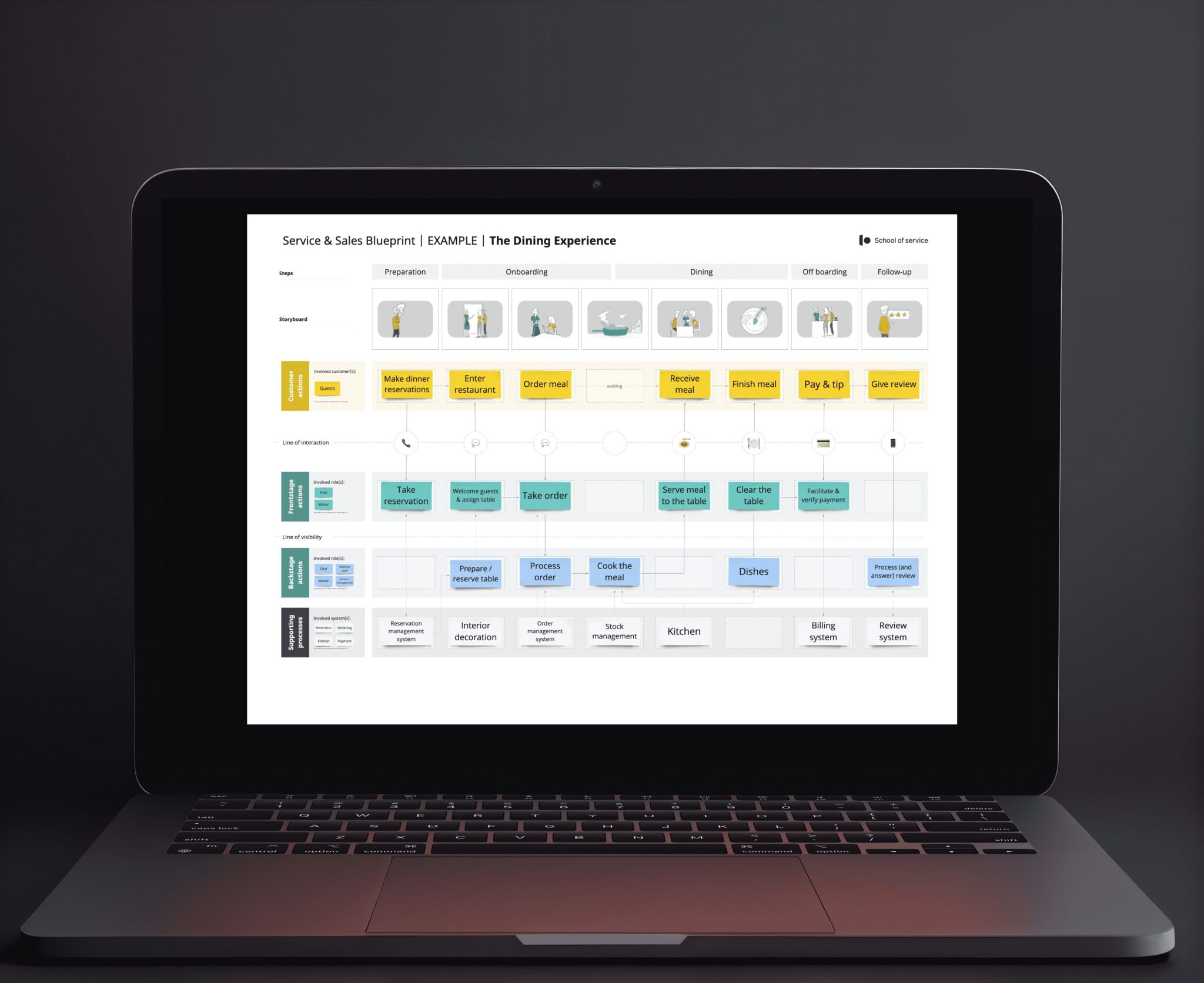When hotels and restaurants build service concepts from service vision to guest experience, it is often called Service Design. This is a systematic approach to ensure that every aspect of the guest experience is thoughtful and consistent, leading to higher customer satisfaction and loyalty. Here's a closer look at our methods and why each part is important.
Service Design Method
We have divided our methodology into three overarching parts to effectively cover all aspects of the guest experience:
1. Service Vision & Values
What it is:
This step aims to clearly define and communicate the overall vision for your service. By creating a strong and well-thought-out concept, it becomes clear what your service represents, what core values guide the business and what makes it unique compared to the competition.
Why it's important:
A clear service vision and defined values create a strong foundation for the entire business. It not only helps to attract the right target audience, but also to guide and inspire the employees. When everyone within the company shares the same vision and values, it becomes easier to deliver a unified and memorable guest experience

2. Guest Journey Mapping
What it is:
Guest Journey Mapping is a method for visualizing the customer's experience from start to finish. It helps understand customer interactions and emotions at every touch point, which is critical to creating a more customer-centric service design.
Why it's important:
By mapping the guest journey, one can identify and eliminate pain points and improve every aspect of their experience. This leads to higher customer satisfaction and increases the chance of repeat visits. Understanding the guest's perspective is critical to being able to offer a service that truly meets their needs and exceeds expectations.
3. Service Blueprint – Service & Sales Behaviors
What it is:
Service Blueprint maps every step in the service process and visualizes both visible and invisible parts of the service. This means defining clear behaviors, including service and sales behaviors, as well as implementing daily pre-shift meetings to drive overall and individual goals. It also includes coaching, follow-up, documentation and reflection.
Why it's important:
Having a detailed plan and clear job descriptions that include vision, values and communication ensures that all employees know exactly what is expected of them. This leads to a consistently high quality of service. Daily pre-shift meetings promote continuous improvement and help employees feel engaged and motivated, which in turn improves the guest experience.
Conclusion
Implementing our Service Design Method in hotel and restaurant operations is critical to creating loyal and repeat guests. By focusing on service vision and values, understanding and improving the guest journey, and clearly defining and implementing service and sales behaviors, companies can ensure that every guest has a memorable and positive experience. This is the key to long-term success in the service industry.
Oscar Lindeberg, CEO School of service & ServiceHub App


